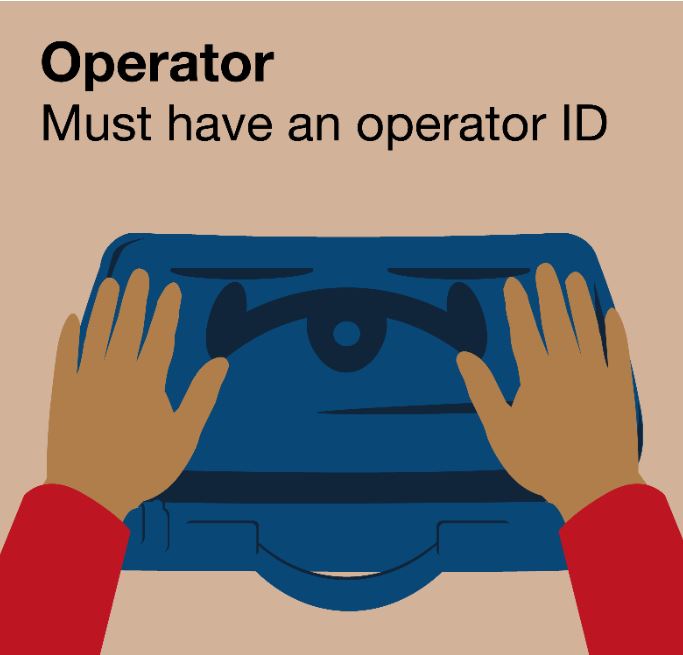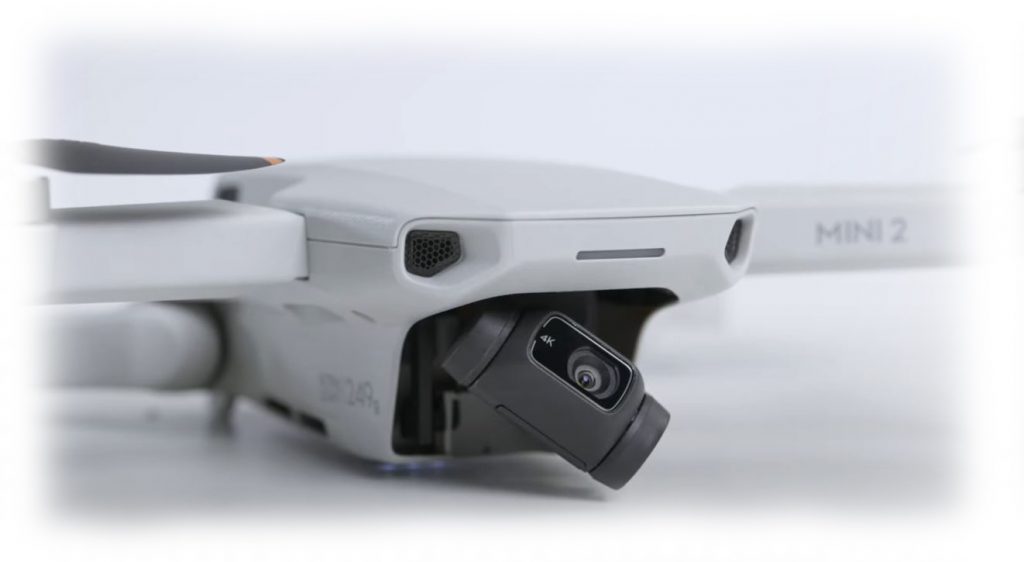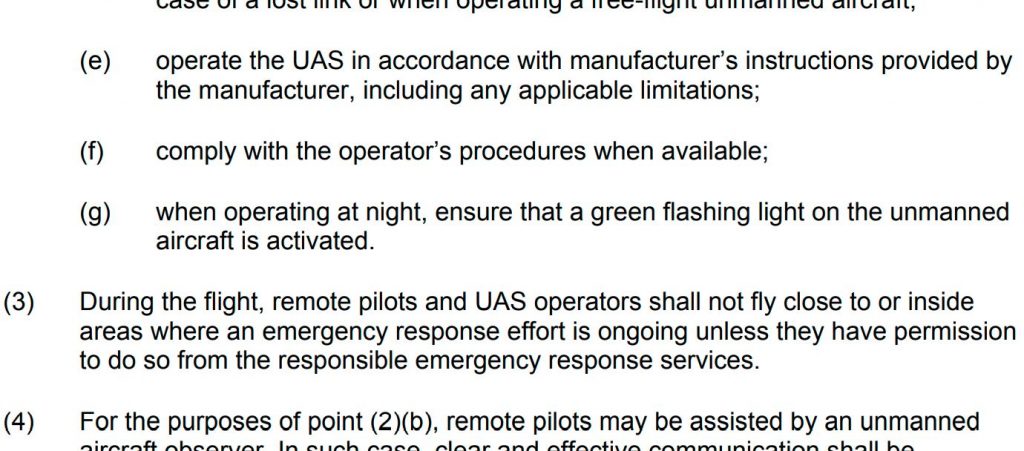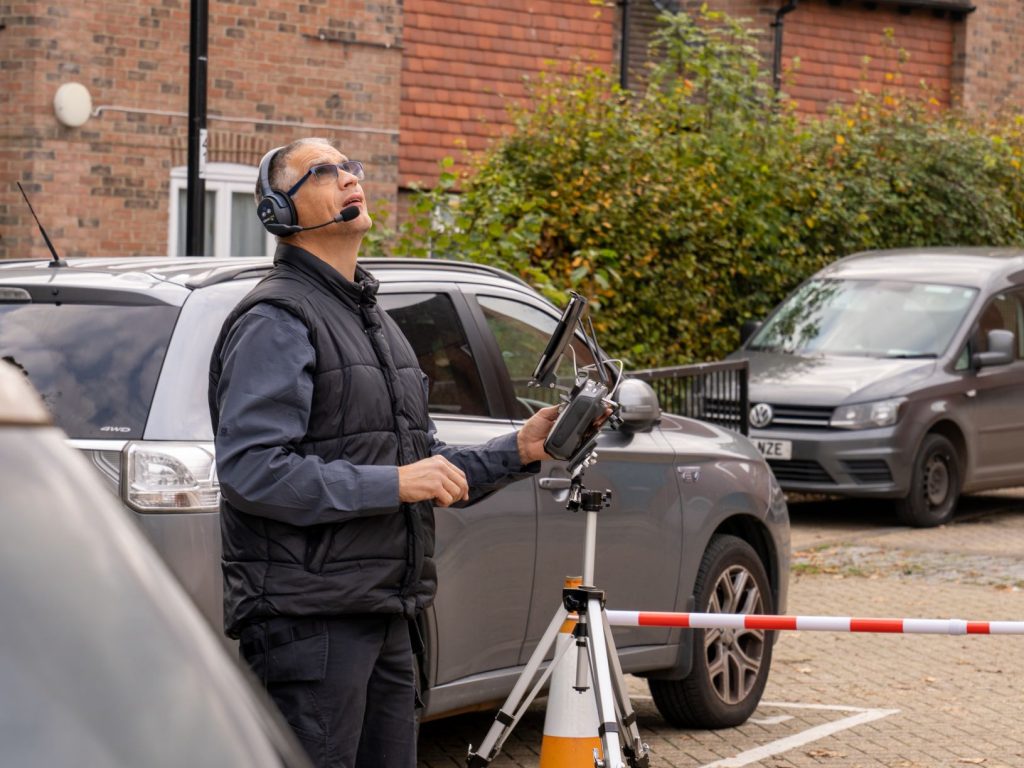2020 Drone Regulations – Seven Months In
The 2016 Air Navigation Order 2020 Amendments.
Note: This page has been edited at 29/12/2022 to remove legacy references to C1 marked drones. Other tweaks included and lfagged.
At 23:00Hrs GMT on 31st December 2020 almost every rule around the flying of drones in the UK changed. No longer was a special permission required from the CAA to carry out commercial work with a drone. All sorts of categories of flight appeared in the shape of Open, Specific and Certified.
But most important of all to a huge number of flyers…they could now take a sub 250g drone and fly it from their garden. Even better, although they had to register as an operator, the pilots of these small drone weren’t required by law to show that they understood the basic rules of flying unmanned aircraft.

Drones fitted with cameras require the operator to register.
Legally incompetent
Yes, let’s read that again. Because the competency requirements for sub-250g drone flights are only that the pilot reads and understands the user manual, then there is no requirement to take the very basic – some would say impossible to fail – Flyer ID DMARES test.
Wait a minute. If they aren’t required to do the most basic research (read the drone code), then how do they know that they have to read the manual? Now, I know a lot of answers to a lot of questions around drones…but I don’t know the answer to that one. Perhaps the CAA can help.
Anyway, that’s the introduction, we had new rules as a late Christmas present to go with everybody’s real Christmas present, the month-old DJI Mini 2!
Sources of wisdom?
The great thing about all of this relaxation of rules for lighter weight, lower risk platforms is that more people can get into this wonderful hobby and even earn a few pennies doing something they love. We’ve also had an explosion of people doing YouTube videos and blogs to explain the rules and show what these fantastic aircraft can do. Facebook is probably my favourite as newcomers dive in with a question and then have to sift through the morass of contradictory opinions, which is what most of the replies are, to work out wrong from right.
Advice, like a gift from an aunt, may be a jigsaw with missing pieces from a charity shop or could be a lovely fat cheque (remember those?…Your aunty does). Because you are taking the time to read this, I will point you in the direction of the more valuable stuff…although it may be tied up so tightly with sticky tape that you’ll never get to it. [Edit: What are my credentials? Well, although I don’t work for the CAA, I do have rather more contact with them than most and have been instrumental in forcing a review of the CAP722 package of regulations launched in December 2022. See here for more details.]
Let’s blow some myths!
Myth 1 – Sub 250g drones are free from the rules.
Sorry, but…no. Nothing could be further from the truth. In fact, if it wasn’t for the new rules, you wouldn’t be able to fly the Mini or Mini 2 (other sub 250g drones are available) in a whole range of places that you could never legally access before.
The Air Navigation Order still applies to little drones. If you want to fly in a Flight Restriction Zone (near an airport) or Restricted Area then you still need to obtain the appropriate permission. Just this week a Mini owner near Gatwick had a knock on the door from the boys in blue for flying without permission.
As mentioned in the introduction, you must have a basic level of competency. This may only extend to reading and understanding the manual but it’s amazing how many people throw their new £500-£1000 acquisition in the air without a Scooby about how it works…or performs in strong winds. This is why there are so many “lost drone” posts in the groups focusing on these smaller drones.
And speaking of flying in high winds, not only is this risky in terms of losing your drone, but it is also illegal as a key requirement of the open category is that the pilot must fly within the manufacturer’s limitations for that machine. Whoops!
Essentially, all the sub-250g drones are free from is the 50m/30m/5m (depending on when you read this) horizontal clearances of the A2 sub-category. This does make them incredibly flexible tools and they have an expanding fan base amongst professional users because of this… but they are not a “rule free alternative”.

Myth 2. – An Open Category flight is only defined by airspace, location, weight and proximity to people.
This is a step up from Myth 1 and I can understand why people think it. An A2CofC course may help but to be honest the syllabus doesn’t dig into the level of detail you need to understand the law properly. Most courses should be pointing you towards the right documents to read to work this stuff out for yourself (key ones being the Air Navigation Order and the UAS Implement Regulation – CAP1789A).

Excerpt from CAP1789A
The problem is that most flyers just want the certificates so they can work or play closer to stuff and in more exciting places. So you can read those documents and understand that the requirement to stay away from emergency scenarios or avoid flying in high winds are illegal and not just ill-advised…or you can continue in ignorance.
Whether flying in the Open Category (with or without an A2CofC) or the Specific Category (with a GVC and Operational Authorisation), there is a sub-set of rules and penalties that you need to understand if you are to stay the right side of the law.
Myth 3. – An A2CofC is required for commercial work.
I see this one pop up in relation to the use of all drones in the open category right down to the sub 250g platforms. It just isn’t true. Insurance compliant with EC785/2004 is required for commercial work (see Myth 4.) but if you don’t need the A2CofC for your flight to be legal then you don’t need the A2CofC.
What commercial work would this allow then? Anything in a congested area with an aircraft that doesn’t require the qualification to fly in that area. We are just talking about the A0 subcategory craft, that is the sub-250g Mini/Mini 2 and similar at the moment.
So what is the A2CofC for then? It’s just a level of competency that allows the qualified to fly closer to and within congested areas with drones up to 2kg. With such drones you can fly as close as 50m horizontally from uninvolved people. In reality this is very difficult to manage so really only opens up quieter residential areas and commercial estates rather than town centres. A better advantage attaches to sub 500g drones such as the DJI Avata. These can be flown with no clearance from uninvolved people, other than the need to fly safely. If you are interested in learning about this stuff and gaining the benefits then get yourself on a course by one of the CAA recognised training companies such as UAVHub.
Myth 4. – “Commercial” insurance is a thing.
A funny one this because I guess there is a thing we all know and love as “commercial” insurance. What’s being talked about here is the difference between Sport and Recreational – let’s call it “hobby” insurance – and insurance that is used for other flights.
If you are flying purely for sport or recreation, then you don’t need to be insured. I’m going to put it out there and say you’re an idiot if you don’t get yourself some public liability hobby insurance because it’s so cheap…but it isn’t a legal requirement. Great PL insurance is available at a ridiculously low cost from the likes of the BMFA and FPVUK, so if you are flying anywhere, particularly over built-up areas then for half the price of a battery you can buy yourself some financial peace of mind in the event of an accident.
If you are not flying purely for sport or recreation then you MUST get insurance cover compliant with EC 785/2004. Companies like Coverdrone and Flock will sell you cover by the day or even the hour so there is no financial reason not to get covered. Now it isn’t up to me to define what is sport and recreation. Some people may get their kicks from surveying neighbours roofs or doing shots for a charity event. But if something goes wrong then relying on your BMFA hobby cover may land you in a sticky situation. Insurance companies tend to draw back the moment somebody gets hurt or there is major property damage.
Although you are doing the flight for nothing, a good rule of thumb may be to ask yourself, “does anybody offer this as a paid service”? If it’s flying around a field with your mates dodging traffic cones then I’m going to guess you’ll find few people opening their bank account to anybody. But if it is a roof survey, filming a charity event etc., then there are lots of drone ops making a living from this stuff…so I’d say it falls outside the “sport and recreation” category, wouldn’t you?
The one grey area in all this I would say is Search and Rescue. I do know that some people do this as a hobby and get huge satisfaction from it. It may also be something that the insurers are happy to be associated with. In this case I would say the best advice is just to speak with your insurer and get them to tell you…in writing…what they would and wouldn’t cover. I’s always better to do this just before a crash than just after!
Myth 5. – It is illegal to disturb or interrupt a drone pilot during a flight.
This one appears from less informed and usually more aggressive posters in social media. You know, the ones whose answer to “can I fly here” is usually just “send it”. The answer is usually in response to somebody who has had a run in with a member of the public who doesn’t like where, how or what they are flying. One thing they tend to forget is that the member of public is actually an “uninvolved person” and should be treated with respect even though their own behaviour may not seem to deserve it.
As a hobby and profession, we will never get the support of the general public if they perceive us to be aggressive and entitled. Instead, kill them with kindness and if all else fails and they get aggressive then just calmly call the police.
Anyway, back to the myth. I believe this once comes straight from the ANO itself. Article 240 – Endangering safety of an aircraft states:
“A person must not recklessly or negligently act in a manner likely to endanger an aircraft, or any person in an aircraft.”
So that’s a slam dunk then. Disturb me while I’m flying and I’ll accuse you of being a bit negligent or reckless and the drone police will come and lock you up.

Remote Pilot Operating – Do not Disturb!
The only hitch with this…and it’s a big one…is that although in many ways an unmanned aircraft is treated as an aircraft, as far as article 240 goes…it isn’t. Article 23 essentially lists the articles of the ANO that relate to unmanned aircraft. Article 241 applies, which means that you can’t go damaging people or property with your drone, but article 240 isn’t included.
This is clarified simply on the CAA’s page “Information for the public about UAS and drones” in their statement, “The term ‘aircraft’ within article 240 refers to any aircraft which is not an small unmanned aircraft as set out in article 23”. Being Mr Picky, I will point out that the term “small unmanned aircraft” is out of date so the CAA need to amend this page…perhaps they will read this and get around to it.
I have asked on various posts what the legislation is that makes it a specific offence to disturb a drone pilot with the result of deafening silence. What I would say is that if a member of the public is getting close enough to you to disturb you physically, then you need to be taking a look at how you operate and your situational awareness. This sort of thing is covered in a professional operator’s manual by an emergency procedure for a reason and the CAA would look to a pilot to ensure they are aware of their area of operations.
Near Myth.
There we go. 5 myths that you are now equipped to rebuff when you see them stated as hard, cold facts in the various Facebook groups and forums. Most of them appear as the result of ignorance rather than malevolence but with the complexity of the new regulations it is important that as many flyers as possible understand this stuff. Things like insurance may seem boring but they can change lives completely if people don’t understand them and do the right thing. Some of these myths are also linked. Go and buy the correct insurance but fly outside the limitations of your aircraft and your insurers won’t pay out in the event of an accident. The reason is that you have increased the likelihood of an accident by flying outside the rules.
If you have bought a drone and want to go and fly it then you need to put your big boy/girl pants on first. You are responsible for your flying whether that is inside or outside the rules. I’m just here to help you understand whether what you are doing is inside or outside the rules.
If you’ve enjoyed this article, you will find more like it every month in Drone User Magazine. Subscribe now!






